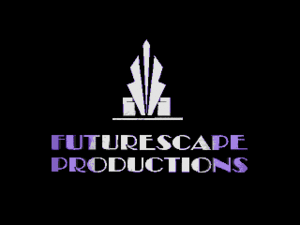Kenneth Hurley
From Sega Retro

|
| Kenneth L. Hurley |
|---|
| Place of birth: Oregon, United States |
| Employment history:
Activision[1] (1987 – 1989)
Electronic Arts[1] (1990-01 – 1992-03)
Futurescape Productions[1] (1992 – 1994)
Electronic Arts[1] (1994-08 – 1997-01)
|
| Role(s): Programmer[1], Executive[2] |
| Education: University of Maryland, College Park (1998-2000; BS Computer Science)[2], Texas A&M University (2013-2015; MBA Business Administration and Management)[2] |
This short article is in need of work. You can help Sega Retro by adding to it.
Kenneth L. Hurley is an American businessman and former video game programmer. A professional software engineer, Hurley and fellow Electronic Arts programmer Kevin McGrath struck out on their own in October 1992[3] to cofound Futurescape Productions[4][5], a San Mateo, California-based development company[3][6] which was contracted by nearby Sega of America on a number of ambitious hardware and software projects.[7] Unfortunately, a number of complications both within Futurescape and the larger game industry resulted in the studio's closure in August 1994[1][8], with Hurley slowly migrating out of the game industry and into the tech sector in the early 2000s.[1]
Contents
Career
Kenneth Hurley began his professional career in September 1982 as a freelance programmer, developing programs for Atari ST computers and even creating the official waste management system software used by the city of Medford, Oregon. In July 1985, he landed a software engineer position at Dynamix in nearby Eugene, where he ported the Apple II game Sword of Kadash to the Atari ST. During this time, one of Hurley's previous Atari ST programs - the disk copying utility Copy II ST - was acquired by a local software company named Central Point Software in September 1985. He also accepted a job with the company, staying on for two months while developing an internal Amiga copy/backup program.[1]
The following January, Hurley teamed with Warrick Holfeld to found Monarch Development, a two-man development team which ported the Rampage games to IBM PC, Apple II, and Amiga home computers from the beginning of 1986 to January 1987. According to Hurley, the "games were [written in] 100% assembly language."[1] Eventually, the series' publisher Activision took notice, and later that year hired Hurley for a full-time software engineer role. He recalls that one of his responsibilities working for the company was stripping the copy protection from older Activision titles so they could be rereleased in compilation packs. He would remain in this position for two years, when he was eventually picked up by Electronic Arts in January 1990. At Electronic Arts, Hurley served as programmer on the IBM PC games Chuck Yeagers Air Combat and The Immortal, acting as lead programmer on the latter. During his time with the company, he found himself specializing in C, C++, and 8086 assembly languages, as well as graphics for 6502/65816, IBM, and Apple II computers.[1]
Futurescape Productions
- Main article: Futurescape Productions.
In October 1992[3], Kenneth Hurley[4] and fellow Electronic Arts programmer Kevin McGrath[5] cofounded their own game development studio, the San Mateo, California-based Futurescape Productions.[3][6] Acting as both company executive and working programmer, Hurley managed a team of four artists, three programmers, and one business manager, all while continuing to directly write C, C++, and assembly language code for the studio's projects. He also had an important role in Futurescape's development capabilities, personally coding the company's in-house Genesis software libraries, as well as designing the physical PCBs used in the development of their games. He also designed undisclosed hardware which allowed for 128k of Save ROM in Genesis games, but nothing further is known of this project.[1]
Futurescape soon became an official third-party developer of Sega of America, beginning a number of ambitious game development projects for the company. Chief among these was Nuclear Rush, a 3D action game along the lines of Battlezone or Stellar-Fire.[9] Intended as the pack-in title for the ill-fated Sega VR headset, the game supports 360° head tracking, with the 3D coding programmed by Hurley himself.[1] Another ambitious title was Monster Hunter, a light gun adventure game envisioned by Sega of America as the launch title for the Menacer, their 16-bit light gun peripheral.[10][11] Hurley was involved in the programming of virtually all the company's games, including personally porting Sid & Al's Incredible Toons from the IBM PC to Genesis hardware.[1] Unfortunately, a number of complications both within Futurescape and the larger game industry resulted in the studio's closure in August 1994[1][8], leaving nearly half a dozen Sega games entirely unreleased.[7]
Later career
Following his experience with Futurescape, Hurley returned to Electronic Arts that same month, which had just begun investing resources into the upcoming Sony PlayStation, and accepted a role as lead programmer on the PlayStation version of Wing Commander III: Heart of the Tiger. Here, he specialized in movie conversion and optimization software, including creating utilities for working with Sony's DCT video format, reverse-engineering Sony's video format to MS-DOS, and writing movie playback routines for branching video. Utilizing his past experience working on the unreleased Sega VR game Nuclear Rush, Hurley again programmed a similar 3D engine for Wing Commander III, learning to code in ARM assembly language and gaining an understanding of Sony's 32-bit hardware.[1]
Hurley left Electronic Arts in January 1997 to accept a technical marketing engineer role at Intel the following month, spending the next two years working with hardware and software engineers to implement consumer requests into upcoming technology, as well as assisting the company's engineers with memory bandwidth optimization. In February 1997, he migrated to a senior software engineer at NVIDIA, where he continued in many of the same roles (such as optimization), and was responsible for working with outside game developers to optimize and assist in the coding of AAA game software.[1]
In March 2003, Kenneth Hurley founded Signature Devices, a Redwood City-based general software company with a speciality for image generation technology. Through Signature Devices, Hurley developed shader technology for seventh generation game consoles like the Xbox 360, PlayStation 3, and mobile phones, and acted as lead engineer on a cross-platform 3D graphics engine of his own designed called the Elemental Engine (on which he built the infrastructure, architecture, and systems for an online gaming network.) In March 2006, Signature Devices established a subsidiary dedicated to publishing video games. Known as Graffiti Entertainment, Hurley served as chairman of the board from its founding to April 2012, acting in an executive role and developing business strategies to ensure sustainable growth and company development.[1]
Following his time with Graffiti Entertainment, Hurley largely left the video game industry to work in the tech sector, using his experience with the now-popular iOS and Android mobile operating systems at Californian companies like Amazon and Athos. He founded the IT services and consulting firm Stellar Giant in October 2014, working with clients such as Eddie Bauer, Facebook, and JD Power, advising on the implementation of new technologies to drive innovation in a number of industries - including video gaming.[1] He departed this position for one at Google in March 2019, acting as a technical manager and working with first and third-party development teams on implementing solutions for issues with the Android platform. Hurley retained this role until March 2023, at which point he migrated to the private sector.
Around this time, Hurley founded two independent companies. Genius Ventures, established in June 2016, is a Sheridan, Wyoming-based financial consulting firm specializing in strategic tech sector investments, while Hurley Engineering, established in April 2021, is a Texan/Floridian health and technology company which specializes in both technical and business strategy for environmentally-sustainable buildings.[12] He remains the acting CEO of the former, and a strategic consultant for the latter, and currently resides in Clearwater, Florida.[1]
Legacy
On July 27, 2020,[13] Hurley uploaded the source code for Futurescape's unreleased Mega Drive games Monster Hunter, Nuclear Rush, Relentless, and Sid & Al's Incredible Toons.[14] Very little had been previously heard of any of these titles, particularly Relentless, with Hurley's actions having preserved much of the four projects from otherwise obscurity.
Production history
- Monster Hunter (Mega Drive; unreleased) — Programmed By (as Kenneth L. Hurley)
- Sid & Al's Incredible Toons (Mega Drive; unreleased) — Programmed By
Photographs
- Main article: Photos of Kenneth Hurley
External links
References
- ↑ 1.00 1.01 1.02 1.03 1.04 1.05 1.06 1.07 1.08 1.09 1.10 1.11 1.12 1.13 1.14 1.15 1.16 1.17 1.18 1.19 1.20 1.21 1.22 1.23 https://www.linkedin.com/in/klhurley/details/experience/
- ↑ 2.0 2.1 2.2 https://www.linkedin.com/in/klhurley/
- ↑ 3.0 3.1 3.2 3.3 https://opencorporates.com/companies/us_ca/C1825862 (Wayback Machine: 2021-05-09 22:23)
- ↑ 4.0 4.1 https://www.kennethhurley.com/blog/meta-disaster-or-5th-time-s-a-charm-for-vr-ar (Wayback Machine: 2024-09-25 07:43)
- ↑ 5.0 5.1 https://www.linkedin.com/in/kmcgrath/details/experience/
- ↑ 6.0 6.1 http://www.drawrick.com/videogamegraphics2D3D.html (Wayback Machine: 2021-05-09 22:29)
- ↑ 7.0 7.1 Futurescape Productions
- ↑ 8.0 8.1 https://www.linkedin.com/in/kmcgrath/
- ↑ File:1993 Sega Catalog.pdf, page 73
- ↑ Electronic Gaming Monthly, "October 1993" (US; 1993-xx-xx), page 18
- ↑ File:MonsterHunter MD US conceptdoc.pdf, page 1
- ↑ https://www.linkedin.com/company/hurley-engineering-llc/
- ↑ https://github.com/OldSkoolCode/Sega-Monster-Hunter
- ↑ https://github.com/OldSkoolCode

